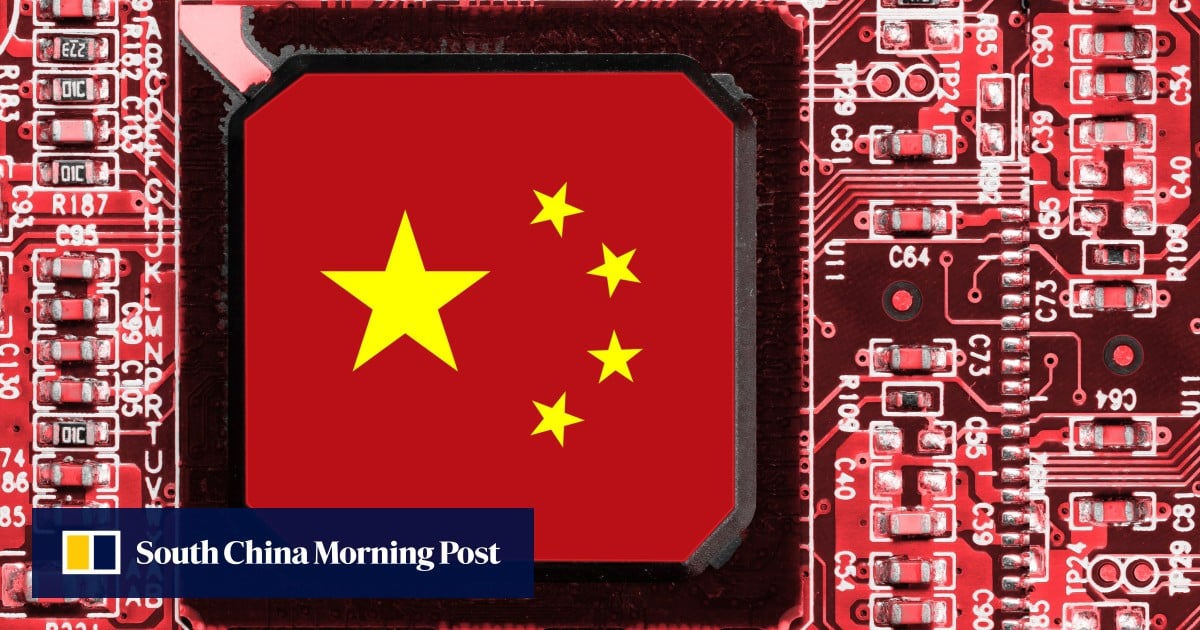A Military Base In The Crosshairs: Understanding The US-China Power Struggle

Table of Contents
The South China Sea: A Focal Point of Military Confrontation
The South China Sea has become a primary arena for the US-China power struggle, a region rich in resources and strategically vital shipping lanes. China's assertive actions have dramatically altered the geopolitical landscape.
China's Assertiveness and Island Fortification
China's increasing military presence in the South China Sea is undeniable. This includes the construction of artificial islands, the expansion of existing facilities, and the deployment of advanced weaponry.
- Specific examples of island bases and their strategic significance: Fiery Cross Reef, Subi Reef, and Mischief Reef have been transformed into heavily fortified military bases, equipped with runways capable of handling fighter jets, sophisticated radar systems, and missile defense capabilities. These bases significantly extend China's reach and projection of power in the region.
- Analysis of China's military capabilities in the region (air power, naval power): China's air power in the South China Sea is growing rapidly, with deployments of advanced fighter jets like the J-11 and J-16. Its naval power is equally impressive, featuring increasingly sophisticated destroyers, frigates, and submarines. This allows China to exert significant control over the strategic waterways.
The US Response: Freedom of Navigation Operations (FONOPs) and Allies
The United States has responded to China's assertiveness with Freedom of Navigation Operations (FONOPs), which challenge China's excessive maritime claims. Furthermore, the US has strengthened its alliances with regional partners to counter China's influence.
- Explanation of FONOPs and their impact: FONOPs involve US naval vessels sailing within 12 nautical miles of disputed islands and reefs, asserting the right of innocent passage. While these operations are intended to uphold international law, they also risk escalating tensions with China.
- Discussion of key US allies in the region (Philippines, Japan, etc.) and their roles: The US works closely with allies such as the Philippines, Japan, Australia, and Vietnam. These partnerships enhance intelligence sharing, joint military exercises, and coordinated responses to China's actions in the South China Sea. These alliances are vital in maintaining a balance of power.
Technological Advancement and the Arms Race
The US-China power struggle is significantly fueled by rapid technological advancements in military capabilities. This arms race introduces new challenges to regional stability.
Hypersonic Weapons and Advanced Missile Systems
Both the US and China are investing heavily in hypersonic weapons and advanced missile systems. These weapons pose a significant threat due to their speed and maneuverability, making them difficult to intercept.
- Comparison of US and Chinese capabilities in this area: While both nations are making strides in hypersonic technology, the exact capabilities remain somewhat opaque. However, both countries are actively testing and developing these weapons, fueling concerns about an escalating arms race.
- Analysis of the destabilizing potential of these weapons: The development and deployment of hypersonic weapons significantly raise the stakes of any conflict, potentially lowering the threshold for military action due to the perceived advantage of speed and precision.
Cyber Warfare and Information Operations
Cyber warfare and information operations have become integral components of the US-China power struggle. These covert actions create challenges in attribution and deterrence.
- Examples of cyberattacks attributed to either side (if verifiable): Attributing cyberattacks definitively is complex. However, both countries have been accused of various forms of cyber espionage and disruptive attacks targeting critical infrastructure and government agencies.
- Discussion of the difficulties in responding to cyber warfare effectively: The decentralized and anonymous nature of cyberattacks makes it challenging to deter such activities effectively. International cooperation is crucial to establish norms and frameworks to mitigate the risks associated with cyber warfare.
Economic Interdependence and Geopolitical Rivalry
The US-China relationship is characterized by a paradox: intense economic interdependence alongside fierce geopolitical competition. This duality significantly complicates the power struggle.
Trade Wars and Economic Sanctions
Trade wars and economic sanctions have become tools in the geopolitical competition between the US and China.
- Examples of trade disputes and their impact: The trade war initiated during the Trump administration, involving tariffs on various goods, significantly impacted global trade and economic growth. These actions demonstrate the use of economic tools to exert pressure in the power struggle.
- Analysis of the effectiveness of economic sanctions: The effectiveness of economic sanctions remains a subject of debate. While they can impose costs, they can also backfire, leading to unintended consequences and harming global economic stability.
Supply Chain Diversification and Decoupling
Both the US and China are actively seeking to diversify their supply chains and reduce their reliance on each other. This "decoupling" represents a significant shift in the global economic landscape.
- Examples of efforts to diversify supply chains: The US is encouraging domestic manufacturing and exploring alternative supply chain partners. China is investing heavily in domestic innovation and expanding its economic ties with other nations.
- Analysis of the challenges and costs of decoupling: Decoupling is a complex and costly process. It may lead to higher prices for consumers and disrupt global trade patterns. The full consequences remain to be seen.
Conclusion
The US-China power struggle is a multifaceted and evolving dynamic with significant implications for military bases globally. The South China Sea exemplifies this rivalry, characterized by China's assertive island fortification and the US response through FONOPs and alliances. Technological advancements, particularly in hypersonic weapons and cyber warfare, further complicate the situation. Despite economic interdependence, trade wars and efforts towards supply chain diversification highlight the intensity of geopolitical competition. Understanding the complexities of the US-China power struggle is crucial for navigating the uncertain geopolitical landscape. Continue your research and stay informed about the evolving dynamics of this critical relationship.

Featured Posts
-
 Analysis Dow Futures And The Impact Of Chinas Economic Policies Amid Trade Tensions
Apr 26, 2025
Analysis Dow Futures And The Impact Of Chinas Economic Policies Amid Trade Tensions
Apr 26, 2025 -
 Chronology Of Karen Reads Legal Battles
Apr 26, 2025
Chronology Of Karen Reads Legal Battles
Apr 26, 2025 -
 The Strategic Importance Of A Military Base In The Us China Competition
Apr 26, 2025
The Strategic Importance Of A Military Base In The Us China Competition
Apr 26, 2025 -
 Alterya Acquired By Chainalysis A Boost For Blockchain Security And Analysis
Apr 26, 2025
Alterya Acquired By Chainalysis A Boost For Blockchain Security And Analysis
Apr 26, 2025 -
 Florida A Cnn Anchor Shares His Go To Vacation Destination
Apr 26, 2025
Florida A Cnn Anchor Shares His Go To Vacation Destination
Apr 26, 2025
